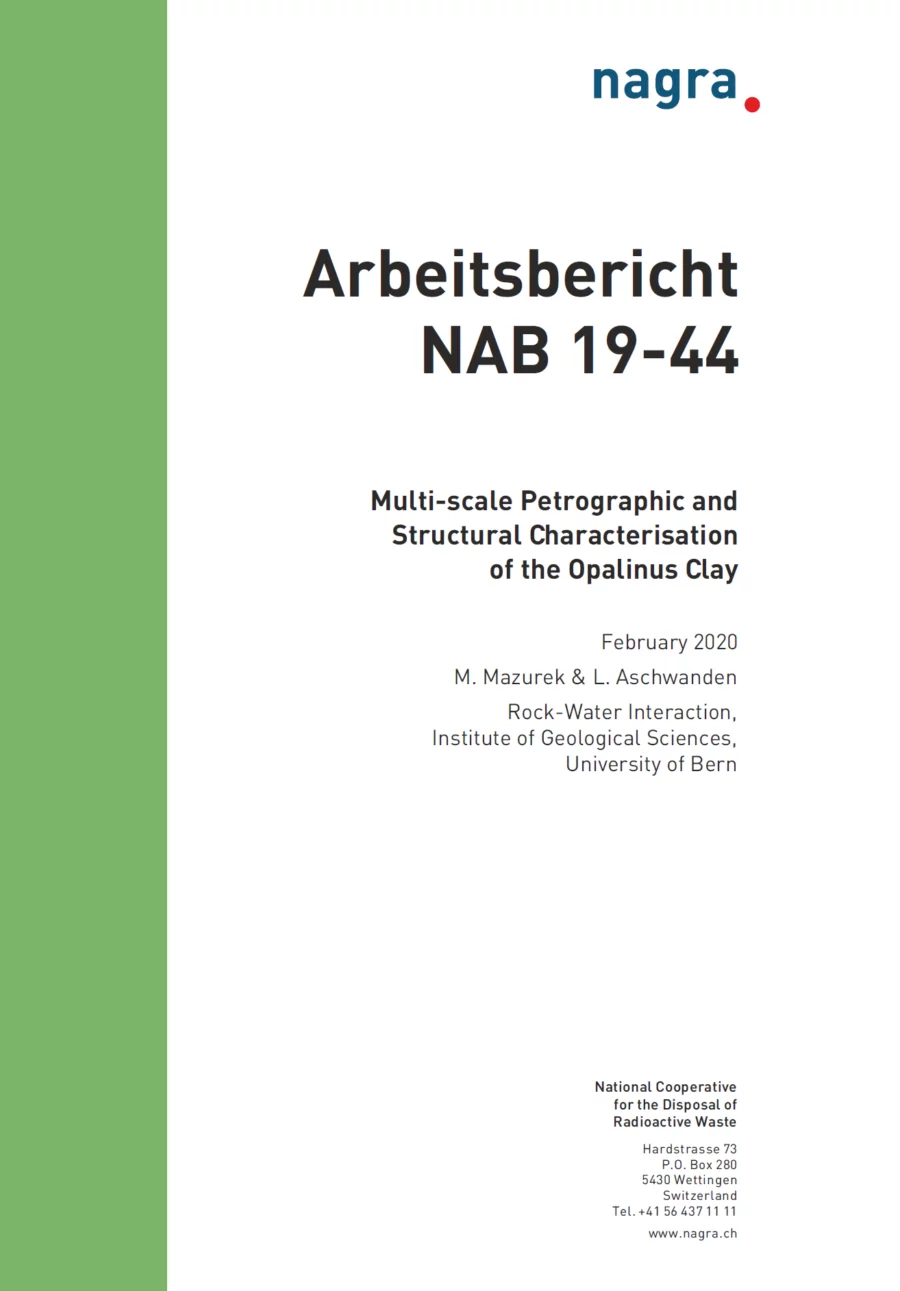
Arbeitsbericht NAB 19-44
Multi-scale Petrographic and Structural Characterisation of the Opalinus Clay
Introduction
The Opalinus Clay in Northern Switzerland has been the target of numerous geoscientific studies over the last 4 decades, pertaining to its geological-mineralogical, geochemical, hydrogeological and mechanical properties. While some studies have been performed in quarries and tunnels, most of the information originates from cored boreholes. In the 1980ies, the Opalinus Clay was penetrated by boreholes Beznau-1984, Riniken-1, Weiach-1 and Schafisheim and was subjected to a geological-mineralogical characterisation. Since the mid-1990ies, multi-disciplinary investigations in the Mont Terri Underground Laboratory boosted the state of knowledge on the formation. Core materials from and downhole measurements in the Benken borehole (drilled in 1998 – 1999) provided the opportunity to widen the scope of the investigations and to focus on mechanical and geochemical issues, including the pioneering work pertaining to the characterisation of pore-water composition. To a substantial degree, the milestone report underlying the demonstration of disposal feasibility in the Opalinus Clay was based on data and insights obtained from the Benken borehole. More recently, core materials from the deep geothermal borehole at Schlattingen (drilled 2010 – 2011) were used for further characterisation, including several innovative techniques. The data set was further augmented by information obtained from numerous shallow geothermal boreholes, where, in the absence of core materials, geophysical logs provided valuable information. Last, the cored geothermal borehole at Lausen was used to characterise the Opalinus Clay at shallow levels.
The purpose of this report is to integrate the information on the geological, mineralogical, petrophysical and structural characteristics of the Opalinus Clay and to highlight the progress since Nagra (2002) pertaining to the function of the Opalinus Clay as a barrier to solute transport. Mechanical aspects are not a topic of this report. Similarly, the composition of pore water and its spatial variability are out of scope but are the focus of a companion report (Wersin et al. 2020).
The relevant characteristics of the Opalinus Clay relate to features and processes on a wide range of scales between tens of kilometres (lateral variability in the region of interest, large-scale structures) to the pore scale (~ 1 nm), spanning a length-scale range of about 13 orders of magnitude. Different chapters of this report pertain to different scales:
- Chapter 2 explores the lithological characteristics of the Opalinus Clay and their variability in the vertical (scale of tens of metres) and lateral (scale of tens of kilometres) dimensions. Sub-units within the Opalinus Clay are defined and correlated laterally between observation points to the degree possible.
- Chapter 3 synthesises the available information on diagenesis and, in particular, on diagenetic mineralisation. This includes the effects of early diagenesis that occurred in the uppermost tens of metres below the surface of the unconsolidated sediment, effects of burial diagenesis at elevated pressure and temperature, and finally tectonic effects leading to vein mineralisations.
- Chapter 4 deals with the micro- and nanoscale structure of the Opalinus Clay and is mainly based on the results of innovative tools, such as SEM and TEM tomography of samples prepared using ion-polishing techniques.
- Chapter 5 addresses macroscopic structural features, such as faults and joints. The degree of tectonic overprint varies substantially in the investigation area, given the fact that the Opalinus Clay occurs in different tectonic units (Molasse Basin, Tabular Jura, Jura fold-and-thrust belt).
- Finally, an attempt is made in Chapter 6 to synthesise all multi-scale information, in particular to provide a suite of illustrations that highlight the main features on all scales.
